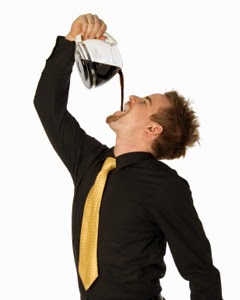If you are the parent of a child with attention deficit
disorder (ADD) in Foxboro, especially the hyperactive subtype of ADD, you’re
probably careful not to give your child foods or drinks that contain caffeine.
Caffeine is a central nervous system stimulant, and can sometimes exacerbate
hyperactivity, impulsivity, and inattention in children with predominantly
hyperactive ADHD. If you’re familiar with ADD and ADHD medications, this may
surprise you. After all, the medicines that treat ADD and ADHD are also
stimulants; however, unlike the methylphenidates and amphetamines used in ADHD
drugs, caffeine doesn’t target the parts of the brain to have the same
counterintuitive effect on hyperactive ADD symptoms.
Of course, you know that coffee, tea, and cola contain a
significant amount of caffeine—often in combination with high levels of sugar
that further contribute to your child “bouncing off the walls.” However, there
are other products on the shelves of Foxboro grocery stores that secretly
contain caffeine, although you might not realize that they do. These five foods
actually contain caffeine, so you may want to choose other options for your ADD
child to keep their energy levels in check.
#1: Non-Cola Soft Drinks
Most people in Foxboro are aware that colas like Coca-Cola
and Pepsi contain a sizeable amount of caffeine. Not every soft drink contains
caffeine; many lemon-lime sodas like Sprite and 7-up, as well as some grape and
orange sodas, are caffeine-free. However, many other non-cola soft drinks do
contain some amount of caffeine. You may want to avoid these or choose a
caffeine-free version or alternative. Some of these sodas include:
·
Sunkist:
41 mg/12 oz
·
Dr.
Pepper: 41 mg/12 oz
·
Barq’s
Root Beer: 22.5 mg/12 oz
·
Mountain
Dew: 54 mg/12 oz
·
Mello Yellow:
52.5 mg/12 oz.
Most soft drinks list the caffeine content on the can or
bottle, so it always helps to check before letting your child drink it.
#2: Chocolate
Caffeine occurs naturally in cocoa beans, so most chocolate
products contain some caffeine. The caffeine content varies from product to
product, ranging from 9 or 10 mg in many products to as much as 31 mg in a bar
of Hershey’s Special Dark Chocolate. Dark chocolates tend to have more caffeine
than milk chocolate. Most chocolate purchased in Foxboro doesn’t contain quite
enough caffeine to present a real problem for children with ADHD, but you may
still want to limit chocolate because of the high sugar content.
#3: Chocolate or Coffee-Flavored Ice Cream
Many ice creams that have chocolate, as well as those that
are coffee-flavored, actually do contain some amount of caffeine.
#4: Pain Relievers
You may be surprised that some over-the-counter pain
relievers in Foxboro have caffeine in them, especially pain medicines designed for
headache and migraine relief. You may associate caffeine with causing headaches rather than curing
them, but caffeine can actually help increase the effectiveness of the active
ingredients (usually an NSAID) for treating headaches, as well as helping the
body absorb the medicine faster. Some over-the-counter pain medicines that have
caffeine include:
·
Excedrin
Migraine Relief: 61 mg
·
Aspirin-Free
Excedrin: 65 mg
·
Bayer
Select Maximum Strength Headache Relief: 65.4 mg
·
Goody’s
Extra Strength Tablets: 16.25 mg
·
Goody’s
Headache Powder: 32.5 mg
·
Midol
Menstrual Maximum Strength Caplets: 60 mg
#5: Energy Mints and Energy Gum
This one is probably obvious, but watch out for products
with “energy” in their name if you’re trying to avoid things that contain
caffeine. There are several kinds of mints, gum, and even chocolate candies
that have added caffeine. They can be potent, with some containing as much as
50 mg of caffeine in a single breath mint.
ALTERNATIVE MEDICINE FOR ADD IN FOXBORO
ALTERNATIVE MEDICINE FOR ADD IN FOXBORO

No comments:
Post a Comment